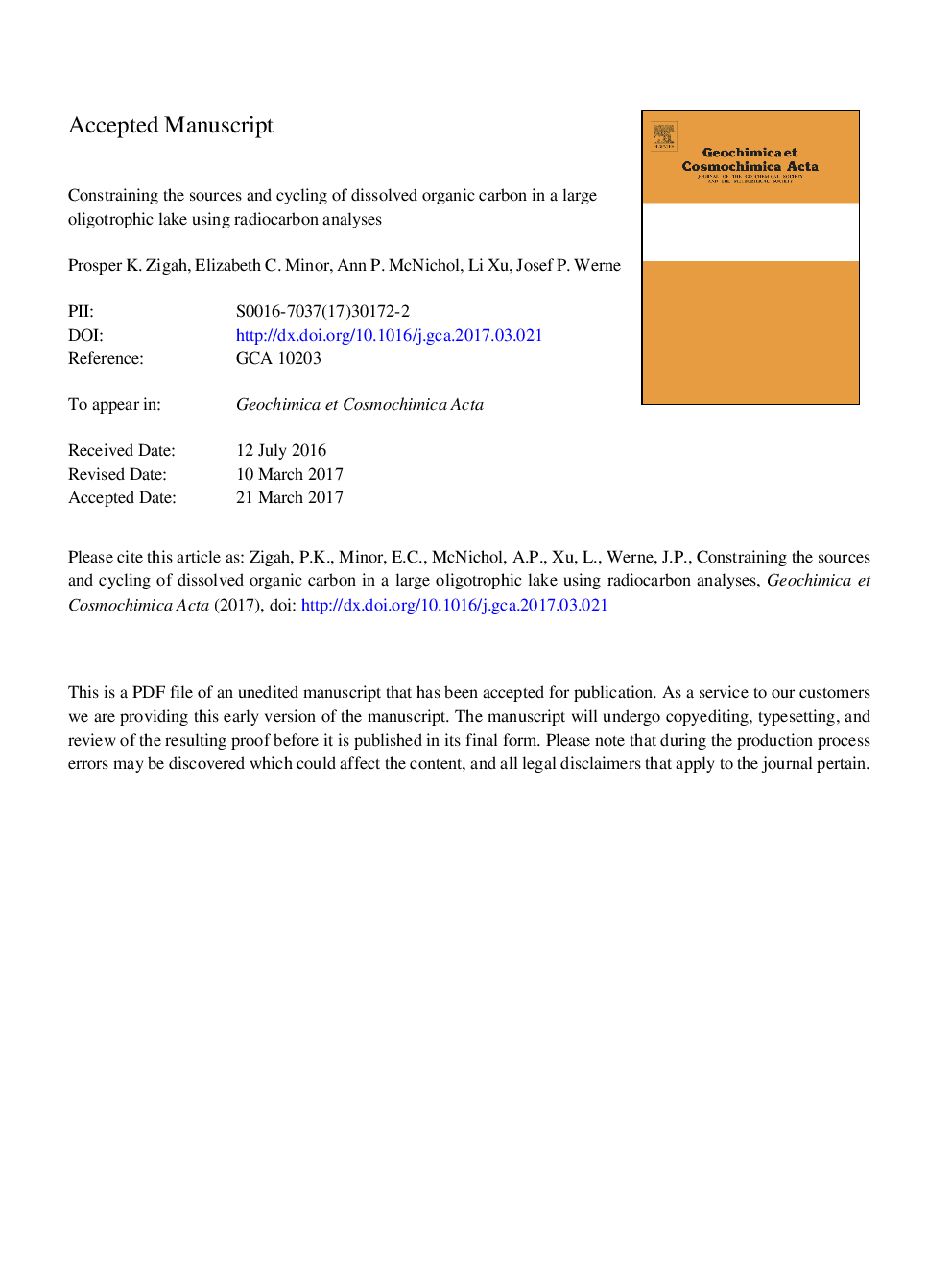| Article ID | Journal | Published Year | Pages | File Type |
|---|---|---|---|---|
| 5783439 | Geochimica et Cosmochimica Acta | 2017 | 49 Pages |
Abstract
We measured the concentrations and isotopic compositions of solid phase extracted (SPE) dissolved organic carbon (DOC) and high molecular weight (HMW) DOC and their constituent organic components in order to better constrain the sources and cycling of DOC in a large oligotrophic lacustrine system (Lake Superior, North America). SPE DOC constituted a significant proportion (41-71%) of the lake DOC relative to HMW DOC (10-13%). Substantial contribution of 14C-depleted components to both SPE DOC (Î14C = 25-43â°) and HMW DOC (Î14C = 22-32â°) was evident during spring mixing, and depressed their radiocarbon values relative to the lake dissolved inorganic carbon (DIC; Î14C â¼Â 59â°). There was preferential removal of 14C-depleted (older) and thermally recalcitrant components from HMW DOC and SPE DOC in the summer. Contemporary photoautotrophic addition to HMW DOC was observed during summer stratification in contrast to SPE DOC, which decreased in concentration during stratification. Serial thermal oxidation radiocarbon analysis revealed a diversity of sources (both contemporary and older) within the SPE DOC, and also showed distinct components within the HMW DOC. The thermally labile components of HMW DOC were 14C-enriched and are attributed to heteropolysaccharides (HPS), peptides/amide and amino sugars (AMS) relative to the thermally recalcitrant components reflecting the presence of older material, perhaps carboxylic-rich alicyclic molecules (CRAM). The solvent extractable lipid-like fraction of HMW DOC was very 14C-depleted (as old as 1270-2320 14C years) relative to the carbohydrate-like and protein-like substances isolated by acid hydrolysis of HMW DOC. Our data constrain relative influences of contemporary DOC and old DOC, and DOC cycling in a modern freshwater ecosystem.
Keywords
Related Topics
Physical Sciences and Engineering
Earth and Planetary Sciences
Geochemistry and Petrology
Authors
Prosper K. Zigah, Elizabeth C. Minor, Ann P. McNichol, Li Xu, Josef P. Werne,
